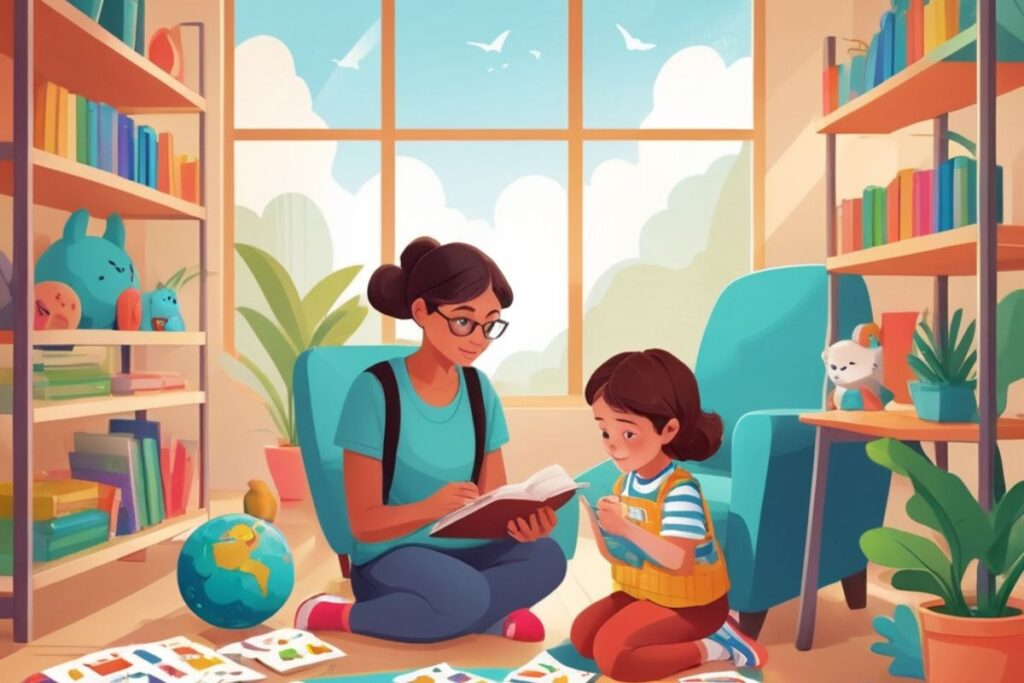Supporting children with learning disabilities requires a multifaceted approach that combines effective strategies, resources, and ongoing communication between parents, educators, and specialists. Understanding and utilizing techniques for effective learning disability therapy can significantly enhance a child’s learning experience and overall development. Here, we explore various techniques for supporting learning disability treatment that can help children overcome challenges and thrive.
Understanding Learning Disabilities
Learning disabilities are conditions that affect how individuals process information, making it difficult to learn in a traditional educational environment. Common types include dyslexia (reading), dyscalculia (math), and dysgraphia (writing). Recognizing these disabilities and implementing appropriate learning disability treatment strategies early can help children build confidence and improve their skills. These treatments often involve tailored educational approaches, therapeutic interventions, and the use of specialized resources to address the specific challenges each child faces, ultimately facilitating a more effective learning experience.
1. Individualized Education Plans (IEPs)
One of the most effective techniques for supporting learning disability treatment is the development of an Individualized Education Plan (IEP). This legally binding document outlines specific educational goals and accommodations tailored to a child’s unique needs. Collaborating with teachers, special education professionals, and parents ensures that the IEP is comprehensive and effective.Important elements of an IEP could consist of:
- Specific Learning Goals: Clearly defined, measurable objectives that are achievable within a designated time frame.
- Accommodations: Adjustments such as extended test time, preferential seating, or the use of technology to assist with learning.
- Progress Monitoring: Regular assessments to track progress towards goals and make necessary adjustments to the plan.
2. Multisensory Learning Approaches
Multisensory learning involves engaging multiple senses to help children process and retain information more effectively. This approach is particularly beneficial for students with learning disabilities, as it caters to different learning styles. Techniques include:
- Visual Aids: Using charts, graphs, and visual organizers to reinforce concepts.
- Tactile Materials: Incorporating hands-on activities, such as manipulatives for math or writing in sand for spelling practice, to enhance understanding.
- Auditory Resources: Implementing audiobooks, music, or verbal instructions to support auditory learners.
3. Explicit Instruction
Explicit instruction is a structured, direct teaching method that focuses on clearly outlining goals, demonstrating skills, and providing guided practice. This technique can be particularly helpful for children with learning disabilities who may struggle with abstract concepts. Key elements include:
- Clear Explanations: Providing step-by-step instructions and modeling the desired behavior or skill.
- Guided Practice: Working alongside students as they practice new skills, offering immediate feedback and support.
- Independent Practice: Gradually transitioning to independent work while monitoring progress and understanding.
4. Positive Reinforcement
Encouragement and positive reinforcement play a crucial role in supporting children with learning disabilities. Celebrating small achievements can help build self-esteem and motivation. Techniques include:
- Reward Systems: Implementing a reward chart to acknowledge progress and encourage positive behavior.
- Verbal Praise: Regularly offering verbal encouragement and recognition for effort, not just results.
- Setting Achievable Goals: Breaking larger tasks into smaller, manageable goals to facilitate a sense of accomplishment.
5. Collaboration with Specialists
Collaboration with specialists such as speech therapists, occupational therapists, and psychologists can enhance the effectiveness of learning disability therapy. Each professional can provide targeted support tailored to the child’s needs. Techniques include:
- Integrated Therapy Sessions: Coordinating sessions to address multiple areas of need simultaneously.
- Regular Communication: Maintaining open lines of communication between all parties involved in the child’s education to ensure a cohesive approach.
- Shared Resources: Utilizing tools and strategies from specialists in the classroom and home settings.
6. Family Involvement
Family support is crucial in learning disability treatment. Involving family members in the educational process can create a supportive environment that fosters learning and growth. Techniques include:
- Parent Training: Providing parents with strategies and resources to help their children at home, such as reading strategies or organizational skills.
- Open Communication: Encouraging regular discussions between parents and teachers about progress and challenges.
- Building a Support Network: Connecting families with local or online support groups to share experiences and resources.
7. Technology Integration
Incorporating technology into learning can enhance engagement and support diverse learning needs. Various tools and applications can aid children with learning disabilities. Techniques include:
- Educational Apps: Utilizing apps designed for reading, math, and organization to reinforce skills.
- Assistive Technology: Implementing tools like speech-to-text software, audiobooks, and graphic organizers to accommodate learning challenges.
- Interactive Learning: Engaging children through online resources, games, and interactive platforms that make learning enjoyable.
Conclusion
Supporting children with learning disabilities through effective learning disability treatment requires a comprehensive approach that involves collaboration, individualized strategies, and ongoing communication. By utilizing techniques such as individualized education plans, multisensory learning, explicit instruction, positive reinforcement, and technology integration, parents and educators can create a nurturing environment where children can thrive. Early intervention and consistent support are key to helping children overcome challenges and achieve their full potential. If you suspect your child may have a learning disability, don’t hesitate to seek guidance from professionals who can assist in developing a tailored treatment plan. Together, we can empower children with learning disabilities to succeed academically and personally.


